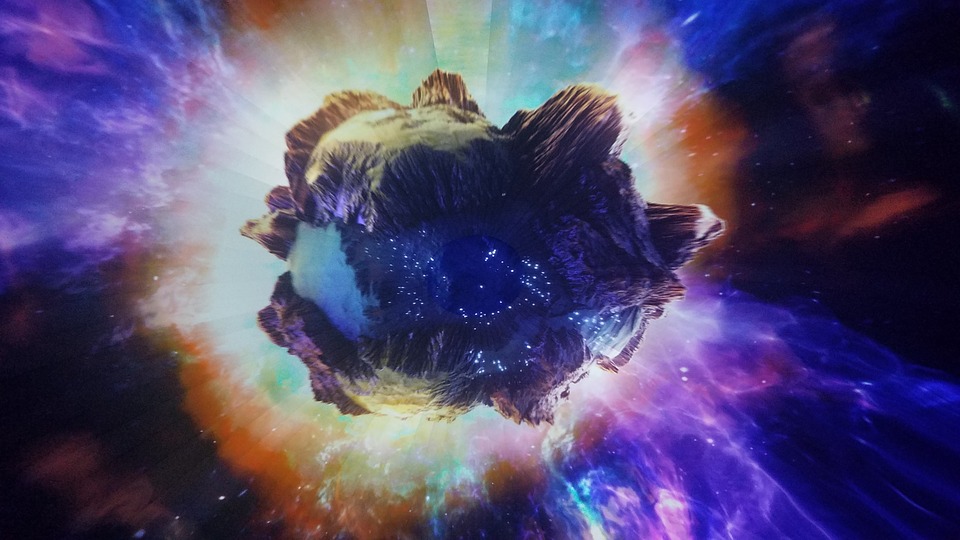When asteroids make a close approach to Earth, it usually gets a little farther than the Moon, but close enough to be seen. However, one particular asteroid will be Earthbound in September and is expected to get closer to the planet past the Moon.
Express reports that asteroid 2011 ES4 will be making its close approach to Earth on September 1st. The asteroid is classified as a Near-Earth Object or NEO and measures 160 feet in diameter, and the agency has also classified this asteroid as Potentially Hazardous. But the time it approaches Earth, the asteroid is predicted to be hurtling through space at a rate of 29, 375 kilometers per hour.
Luckily, the asteroid will not collide with Earth as the closest it will get will be at a distance of 71, 805 kilometers. This is a fifth of the distance between the Earth and the Moon, making it one of, if not the closest an asteroid of this size has gotten to the planet.
Even though ES4 is a relatively small asteroid, NASA still classifies this as potentially hazardous as even smaller rocks could pass through the atmosphere undetected and cause tremendous damage. One such instance was the Chelyabinsk incident back in 2013. However, asteroids that are much, much, smaller, would more than likely burn up upon contact with the atmosphere.
In other related news, astronomers from the Sao Paulo State University Institute of Geosciences and Exact Sciences have detected 19 asteroids that have interstellar origins. These asteroids are referred to as Centaurs and have been seen orbiting the solar system.
According to the study’s co-author Professor Maria Helena Moreira Morais, “In this latest study, we recognized 19 Centaurs of interstellar origin. To investigate the origins of these objects, we built a computer simulation that works like a time machine, running their trajectories backwards by 4.5 billion years. The simulation enabled us to find out where these objects were at that time.”
They found that in their simulation of 4.5 billion years ago, they found that the Centaurs orbited around the Sun in orbits that are perpendicular to the disk’s plane, referring to the disk made up of gas and dust. This meant that these Centaurs did not originally come from the Solar System, but rather the neighboring stars during the formation of the planets.



 Tabletop particle accelerator could transform medicine and materials science
Tabletop particle accelerator could transform medicine and materials science  Blue Origin’s New Glenn Achieves Breakthrough Success With First NASA Mission
Blue Origin’s New Glenn Achieves Breakthrough Success With First NASA Mission  SpaceX Starship Test Flight Reaches New Heights but Ends in Setback
SpaceX Starship Test Flight Reaches New Heights but Ends in Setback  NASA Astronauts Wilmore and Williams Recover After Boeing Starliner Delay
NASA Astronauts Wilmore and Williams Recover After Boeing Starliner Delay  NASA Faces Major Workforce Reduction as 20% of Employees Prepare to Leave
NASA Faces Major Workforce Reduction as 20% of Employees Prepare to Leave  CDC Vaccine Review Sparks Controversy Over Thimerosal Study Citation
CDC Vaccine Review Sparks Controversy Over Thimerosal Study Citation  Lab-grown meat: you may find it icky, but it could drive forward medical research
Lab-grown meat: you may find it icky, but it could drive forward medical research  Trump Signs Executive Order to Boost AI Research in Childhood Cancer
Trump Signs Executive Order to Boost AI Research in Childhood Cancer  SpaceX’s Starship Completes 11th Test Flight, Paving Way for Moon and Mars Missions
SpaceX’s Starship Completes 11th Test Flight, Paving Way for Moon and Mars Missions  Lost in space: MethaneSat failed just as NZ was to take over mission control – here’s what we need to know now
Lost in space: MethaneSat failed just as NZ was to take over mission control – here’s what we need to know now  Trump and Merck KGaA Partner to Slash IVF Drug Costs and Expand Fertility Coverage
Trump and Merck KGaA Partner to Slash IVF Drug Costs and Expand Fertility Coverage  Is space worth the cost? Accounting experts say its value can’t be found in spreadsheets
Is space worth the cost? Accounting experts say its value can’t be found in spreadsheets  FDA Pilot Program Eases Rules for Nicotine Pouch Makers
FDA Pilot Program Eases Rules for Nicotine Pouch Makers 































